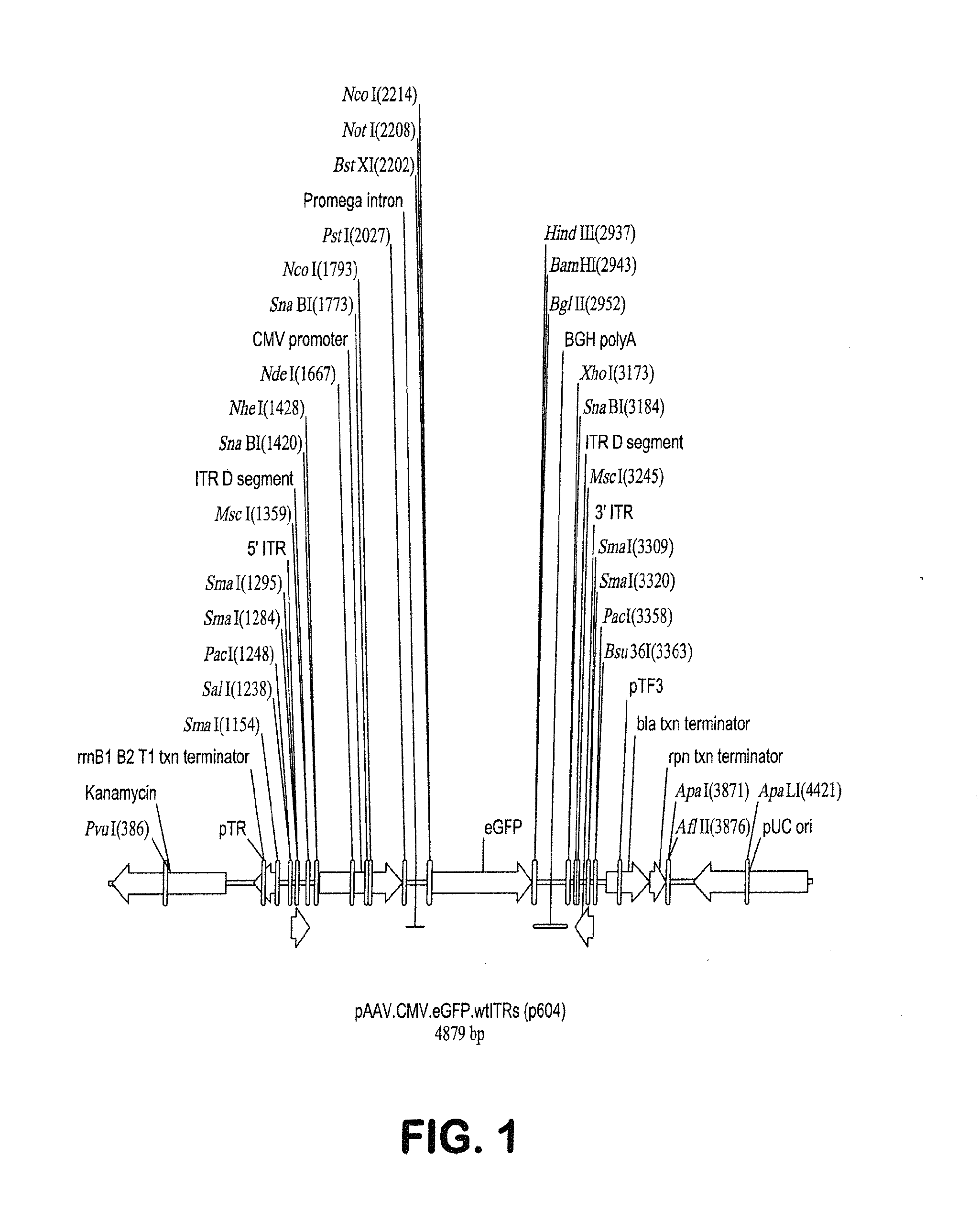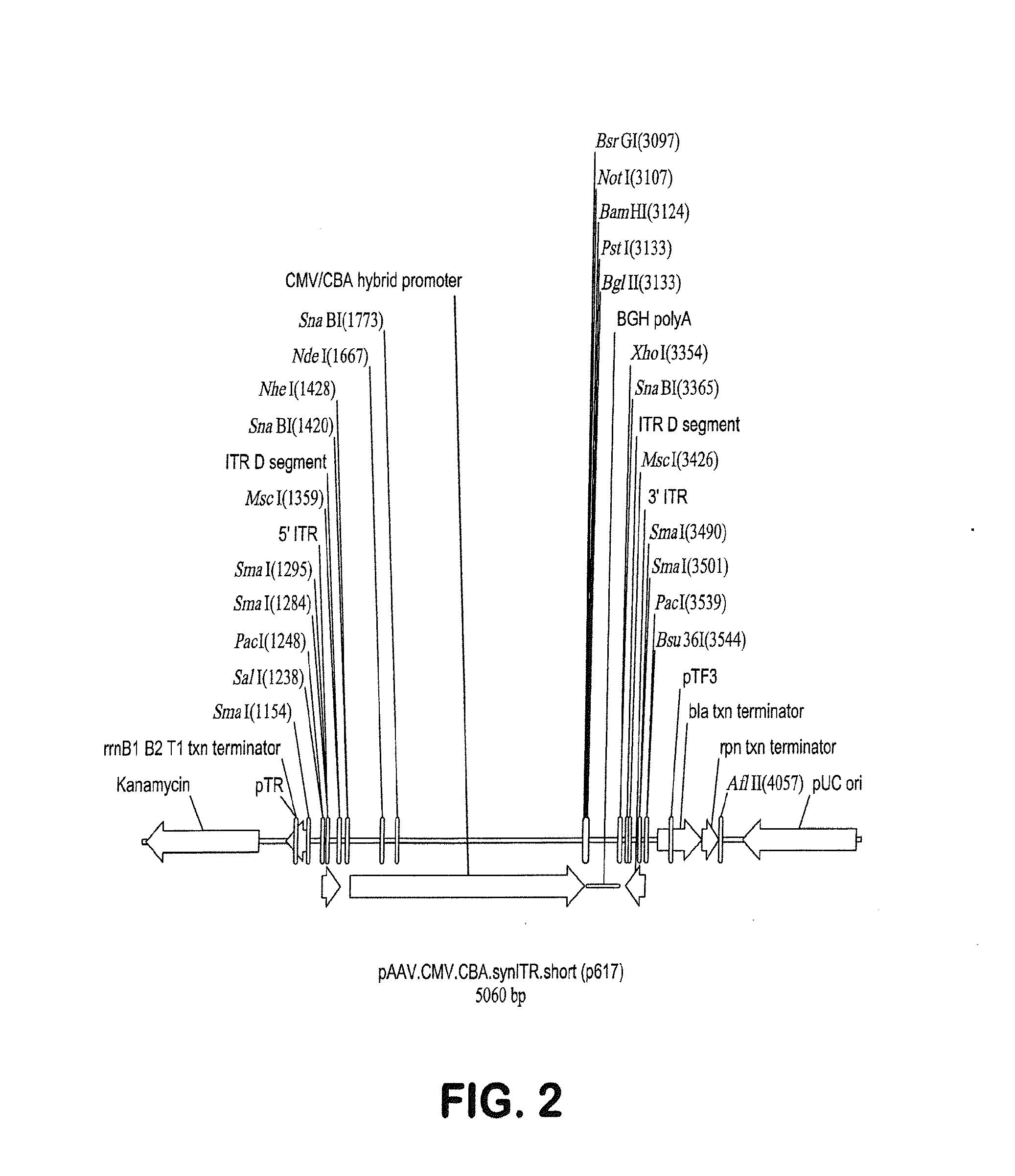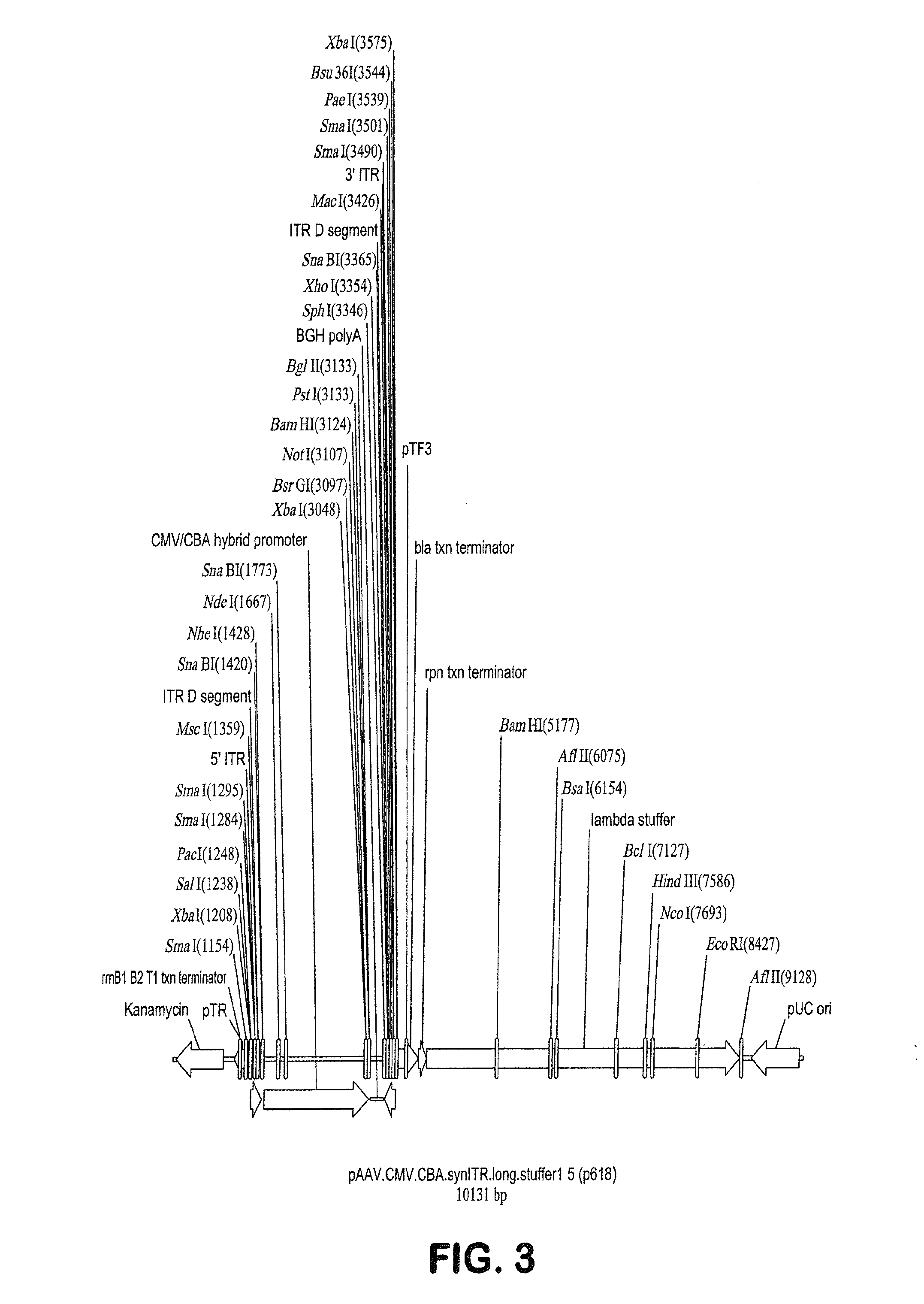Proviral Plasmids and Production of Recombinant Adeno-Associated Virus
a technology of plasmids and adenovirus, which is applied in the direction of viruses/bacteriophages, applications, peptide sources, etc., can solve the problems of complexity, inability to replicate raav, and inability to produce a recombinant aav, so as to facilitate the substitution of alternative plasmid components, facilitate subcloning, and improve the efficiency of raav vector production
- Summary
- Abstract
- Description
- Claims
- Application Information
AI Technical Summary
Benefits of technology
Problems solved by technology
Method used
Image
Examples
example 1
Construction of AAV Proviral Plasmids Containing Human RdCVF1
[0103]NCBI reference NT—011295.11, Homo sapiens chromosome 19 genomic contig, GRCh37.p2 reference primary assembly contains the nucleotedoxin-like protein 1 or rod-derived cone viability factor 1 (RdCVF1). The mRNA reference sequence is NM—138454.1 (SEQ ID NO: 4).
[0104]A fragment including exon 1 with 5′ UTR as well as upstream and downstream flanking intronic sequence, with a stop codon in the downstream intron is used. Exon 1 begins at nt 21 of the genomic fragment.
[0105]Based on the reference sequences, two DNA fragments comprising the open reading frame (ORF) and a genomic fragment are synthesized by DNA2.0. The latter is synthesized as a 470 bp fragment with 5′ NotI and 3′ BamHI sites to facilitate cloning. The 357 bp ORF cDNA is synthesized with a complete Kozak consensus sequence that was partly embedded in a 5′ NotI site. The stop codon is embedded in a BclI site, followed by a BamHI site. The Bell site is inserted...
example 2
[0107]Plasmids included the newly made AAV-hRdCVF1 proviral plasmids described in Example 1, as well as pAAV2.1 CMV.hRdCVF1 (p368), another plasmid made by the inventors, and two pcDNA3-based plasmids p452 and p488 supplied by a third party.
[0108]To determine expression levels of RdCVF1 from the plasmids, a Western blot experiment was performed as follows: 293T cells (passage number n+5) were seeded into 100 mm culture dishes. At 24 hours after seeding, the cells were approximately 30% confluent and were transfected with 25 μg / dish of endotoxin-free plasmid (Quiagen) using lipofectamine LTX (ratio 2.5 μl lipofectamine LTX per μg of plasmid).
[0109]The cell culture medium was DMEM with high glucose, no pyruvate, and 10% FBS (no antibiotic). At 6 h the medium was aspirated and replaced with 5 ml of serum-free Optimem medium per dish. 24 h post transfection, the conditioned media were collected and spun for 5 min at 1200 rpm to remove cells and debris. A protease inhib...
example 3
Production of rAAV
[0114]As discussed in Example 2 above, human Rod-derived Cone Variability Factor 1 is introduced into p618 under control of the 49 nucleotide CMV enhancer / CMV-CBA hybrid promoter by insertion into the polylinker following digestion of p618 with the unique restriction enzymes NotI and BamHI. Following this transgene insertion, the proviral plasmid was called p625.
[0115]Proviral plasmid p625 is co-transfected into a stable rep and cap expressing host packaging cell line B-50 (International Patent Application Publication No. WO 99 / 15685) with the adenovirus E1, E2a, and E40RF6 DNA. The gene expression cassette from the proviral plasmid is packaged into AAV particles employing iodixanol gradient purification followed by herparin-sepharose agarose column chromatography. Vector titers are determined using an infectious center assay. AAV-hRdCVF1 virus preparations are made and combined to a desired total volume.
[0116]The rAAV-hRdCVF1 may be employed, for example, to trans...
PUM
| Property | Measurement | Unit |
|---|---|---|
| Digital information | aaaaa | aaaaa |
| Digital information | aaaaa | aaaaa |
| Length | aaaaa | aaaaa |
Abstract
Description
Claims
Application Information
 Login to View More
Login to View More - R&D
- Intellectual Property
- Life Sciences
- Materials
- Tech Scout
- Unparalleled Data Quality
- Higher Quality Content
- 60% Fewer Hallucinations
Browse by: Latest US Patents, China's latest patents, Technical Efficacy Thesaurus, Application Domain, Technology Topic, Popular Technical Reports.
© 2025 PatSnap. All rights reserved.Legal|Privacy policy|Modern Slavery Act Transparency Statement|Sitemap|About US| Contact US: help@patsnap.com



